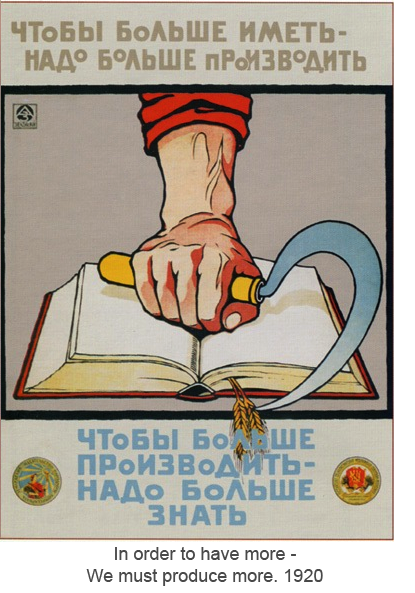Are You Now or Have You Ever Been . . .
Despite the fact that Washington state politics never ranges beyond the relatively narrow spectrum of the rest of the country–from slightly right of center to a fair bit farther right—Washington politicians will often claim such labels as “liberal” or “progressive.” And almost all of them can be counted on in the clutch to call themselves “independent.”

But none of them will admit to being a communist.
And yet much of state government’s approach to higher education would make the old architects of Soviet-style planned economies proud. Whether it’s high demand enrollments, the HEC Board’s Master Plan, workforce training, or degree targets in performance agreements, the state legislature seems much more concerned with training and managing the workforce than educating the citizenry. The state senate committee on higher education is even called “Higher Education and Workforce Development.”
It is almost impossible to have a conversation about higher education in Olympia without it quickly turning to questions of training, utility and function. We need this many engineers, that many nurses, more people in STEM fields. Institutions of higher education are understood as little more than the handmaidens of businesses, which are like machines that need parts that our colleges and universities are supposed to produce. “Washington’s postsecondary education and training system,” says Governor Gregoire’s website, “prepares students for the knowledge economy and provides a skilled work force for industries of all types.”
This is why there has been so much emphasis on “workforce training” in the current budget discussions. The governor’s budget proposal robs the Peter of the universities to pay the Paul of the community colleges in order to create 2500 more “workforce training” slots. Word on the street is that budget writers in the state senate are considering an even larger fund shift toward training.
At this point in a discussion like this, you would understandably expect the frothy English professor to start waxing indignant about the humanity, self-fulfillment, peace, love, and harmony that come with a university liberal arts education. But here at the blog we’ve been trolling the hallways of state government long enough to no longer care much about the inherent virtues of reading Rousseau or boogying to Beethoven.
What we care about are barriers to opportunity for the middle and working classes.
When President Obama or Jill Biden or Governor Gregoire or the Seattle Times or state legislators who write budgets talk about the “workforce” and how and for what they should be trained, they’re talking about somebody other than them and theirs. What we have here are people from the winning side of the have/have not line prescribing limits for those on the other side. As long as state government continues to write budgets that define 2-year higher education as a public good and 4-year higher education as a private good, it will continue to look more like the Politburo serving a planned economy than a democratically elected set of institutions that are supposed to foster dreams and social mobility.
Education and training at every level are important. But funding choices, consciously or not, are ensuring that those born into the “workforce” are destined to stay there.
From each according to their ability, to each according to their economic class.